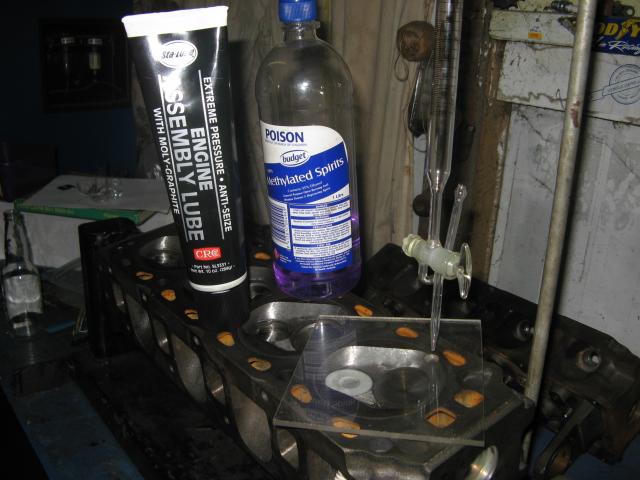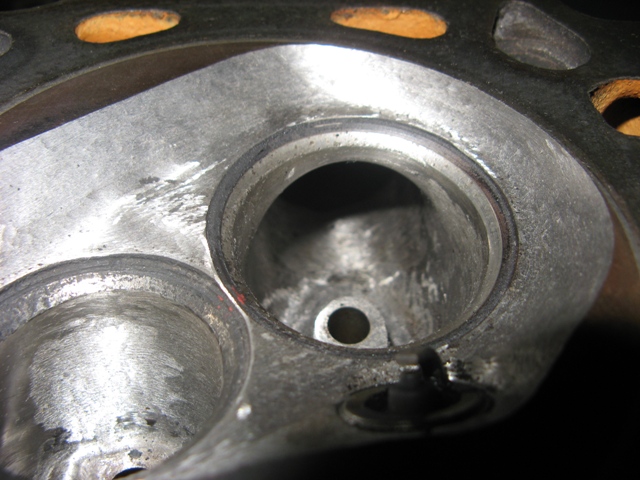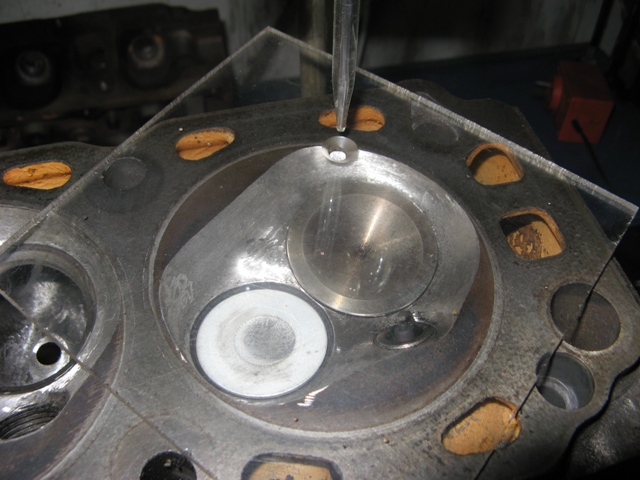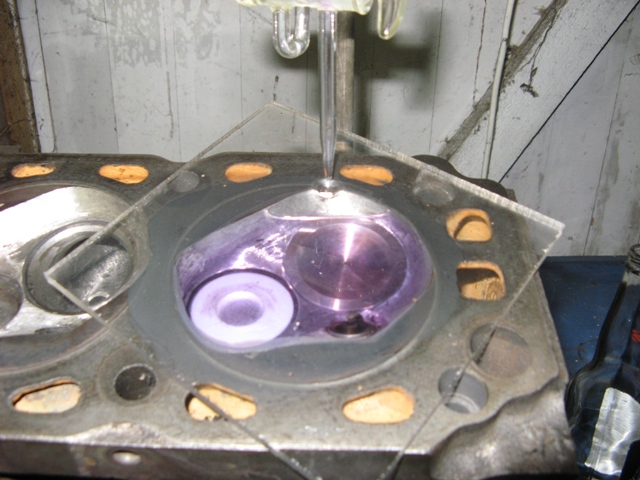You will need a piece of plastic sheet just a bit bigger than the combustion chamber, inlet and exhaust valves, spark plug, an accurate measuring device like a burette, meths and some grease to help seal everything.
This is the combustion chamber of a head I was porting. I like to clean up the combustion chambers to remove any sharp edges as they can heat up and cause hot spots. I'll polish them as well to make it harder for carbon to stick.
Place the plastic sheet over the combustion chamber and on the plastic mark the top most point and drill a hole in it. This hole is to let the meths in and the air out. It should look like this.
First you need to get the head sitting so that it's on a slight angle. I use my porting stand but anything that gets the head on the right angle will do.
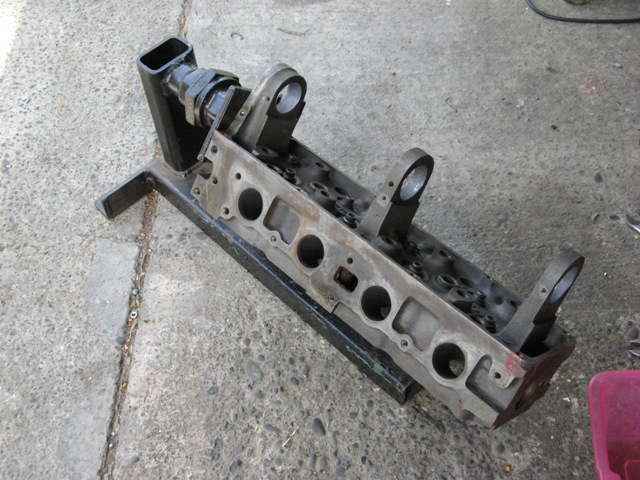
Then grease the valves on the face that mates to the valve seat. Don't be shy with the grease as it has to make a liquid seal. Wipe the excess grease out of the combustion chamber. Put the spark plug in and do it up as you would in a running engine. Then grease the surface of the head around the combustion chamber and press the plastic sheet on, the trick here is to use the smallest amount of grease possible to get a seal. It should look like this.
Now all you need to do is fill the combustion chamber. For this I use meths as it has a low surface tension and will give a more accurate measurement than a liquid with a high surface tension like water. Before I had a burette I used a 20cc syringe which did the job but was not as accurate.
Here's the numbers
| CC's | % difference | CR | ||
| Cyl1 | 49.80 | 1.97% | 9.26 | :1 |
| Cyl2 | 50.80 | 0.00% | 9.12 | :1 |
| Cyl3 | 50.20 | 1.18% | 9.20 | :1 |
| Cyl4 | 49.40 | 2.76% | 9.31 | :1 |
| Average CR | 9.22 | :1 |
As you can see I'm going to have to do some work to get these even.
